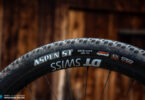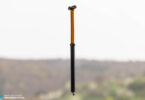Previously, the Orbea Occam was available as two very different bikes – the Occam TR (an XC focussed 29er with 130 mm travel) and the Occam AM (a 27.5” trail bike with 150 mm travel). For 2020, Orbea have completely redesigned the Occam by combining traits from both the TR and AM builds in an effort to bring the best of both worlds into one package. Introducing the Orbea Occam 2020…
Orbea claim the new Occam is your ultimate trail companion, no matter how or where you choose to ride it. At first glance, the geometry and spec look sorted, and Orbea’s MyO customisation platform is an enticing option (for those who can afford the Occam M10 and M-LTD models). However, looks can be deceiving, so we headed deep into the Pre-Pyrenean mountains to find out how the new Occam really rides.

What’s new with the Orbea Occam?
Orbea have redesigned the Occam from the ground up by designing a brand new frame and geometry and choosing to stick with one wheel size across all models. The new frame is stunning and clearly takes some inspiration from Orbea’s enduro machine, the Rallon. However, Orbea were keen to emphasise that “form follows function” was an important motto during the development of the Occam, and so, apparently its good looks are just a welcome by-product of its technical design. The new Orbea Occam rolls on 29-inch wheels and has 140 mm travel out back. In its standard configuration, the Occam will be shipped with a 140 mm travel fork, however, this can be upgraded to a 150 mm travel model for minimal cost.
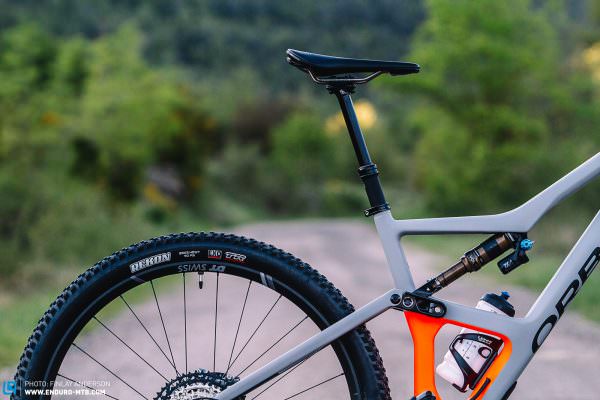

Orbea’s engineers worked closely with FOX to tune the Occam’s suspension, testing over 50 options before settling on the configuration they liked the most. The Occam comes with a 0.2 in3 spacer fitted in its FOX shock as standard, and Orbea include a 0.4 in3 spacer in every box so you can fine tune your suspension’s progressivity. All Occam models feature full internal cable routing, a frame protector on the downtube and chainstays, a threaded bottom bracket and a lifetime warranty as standard.

MyO configurator
The paint job on the Occam M10 and M-LTD models are fully customisable with Orbea’s free MyO configurator. Here you can choose the primary and secondary frame colours as well as logo colours, a matte or glossy finish and even get your name painted on the seat stay. In total, there are over one million colour combinations to choose from. This is an awesome way of adding a personal touch to your ride, but we wish it were available for all models, not just the high-end versions.
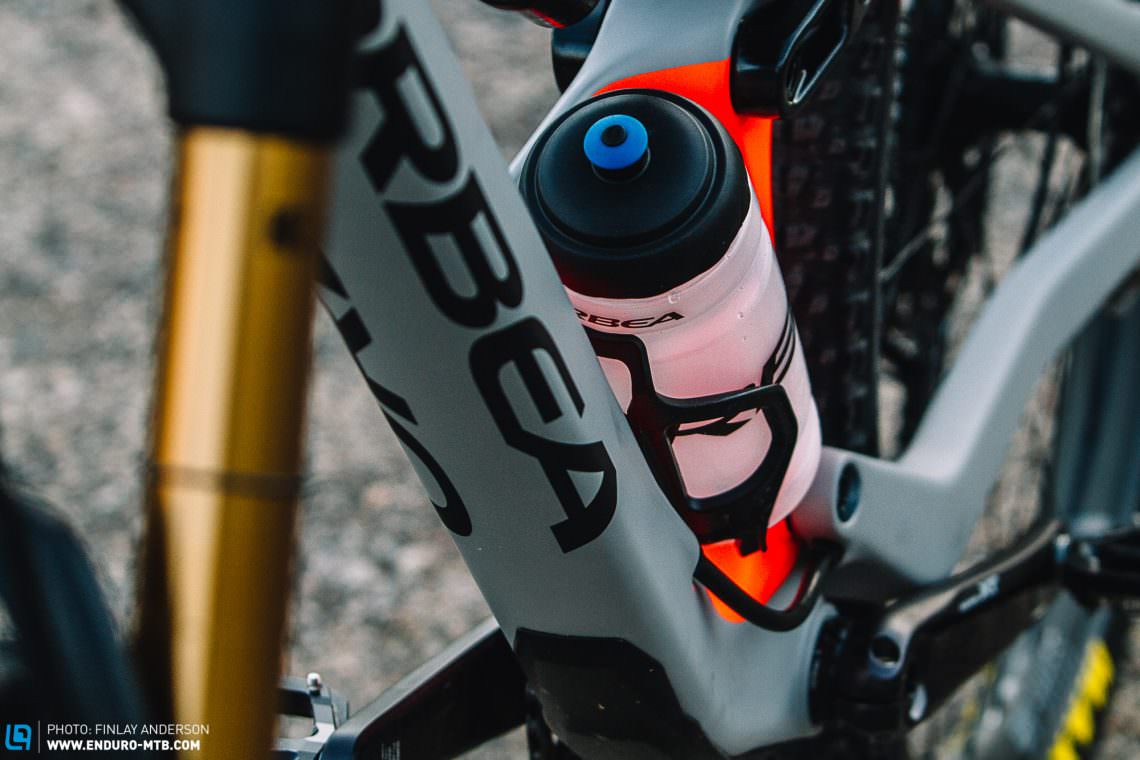
Fork upgrade
Every new Occam (apart from the flagship M-LTD model) comes standard with a 140 mm travel fork. However, this can be upgraded to a FOX 36 Factory with 150 mm travel. Orbea promise that the upgrade fee is no more than the cost price, so all you pay is the difference between the specced fork and the longer travel option (around € 200 depending on the build kit). The longer fork rakes out the head angle by half a degree to 65.5°, and slackens the seat angle by the same amount to 76.5°.
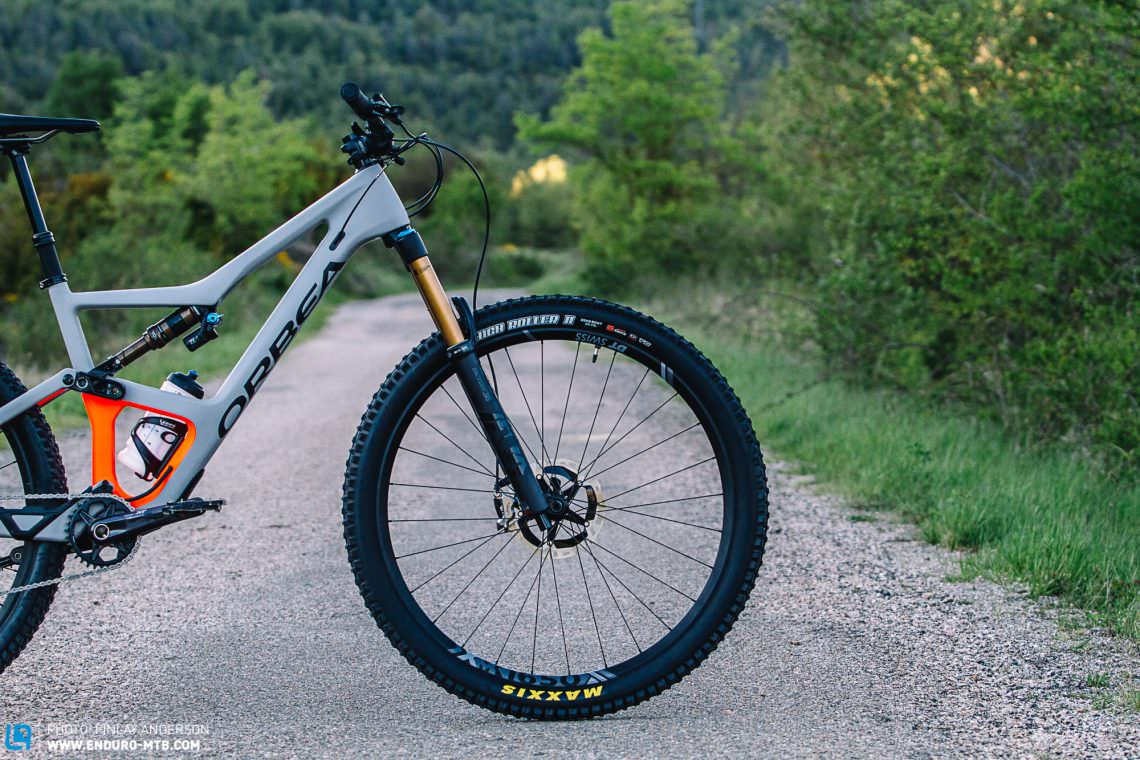
Geometry of the Orbea Occam
Ditching the previous Occam frame and starting afresh gave Orbea the chance to totally redesign the geometry of the new Occam. Initial testing was carried out with the Rallon and Occam’s mutant love child, called the R-Occam, which had a Rallon rear end and Occam front triangle. When compared to the previous 29er Occam (the Occam TR), it is obvious that Orbea have followed the longer, lower and slacker trend. The new Occam’s reach has increased by nearly 20 mm (size Medium). The head angle has been slackened by 1.5° and the seat angle has steepened significantly, now sitting at an upright 77°. The Occam’s chainstays have also grown slightly and standover clearance has been improved too.
| Size | S | M | L | XL |
|---|---|---|---|---|
| Seat tube | 381 mm | 419 mm | 457 mm | 508 mm |
| Top tube | 565 mm | 592 mm | 619 mm | 649 mm |
| Head tube | 95 mm | 105 mm | 120 mm | 140 mm |
| Head angle | 66° | 66° | 66° | 66° |
| Seat angle | 77° | 77° | 77° | 77° |
| Chainstay | 440 mm | 440 mm | 440 mm | 440 mm |
| BB Height | 336 mm | 336 mm | 336 mm | 336 mm |
| Wheelbase | 1165 mm | 1194 mm | 1224 mm | 1259 mm |
| Reach | 425 mm | 450 mm | 474 mm | 500 mm |
| Stack | 604 mm | 613 mm | 627 mm | 646 mm |

The Orbea Occam M10 on the trail
To fully experience what the new Orbea Occam has to offer, we flew out to test it on the rocky trails of the Pre-Pyrenees. Orbea recommended a size Large Occam M10 for our 184 cm tall tester. On paper, the generous 474 mm reach and stretched chainstays of the Large Occam should be a good fit but the bike felt shorter than its geometry figures might suggest, likely due to its nimble handling. This is something to keep in mind and we can’t help but think we might have been better off upsizing to a size XL.
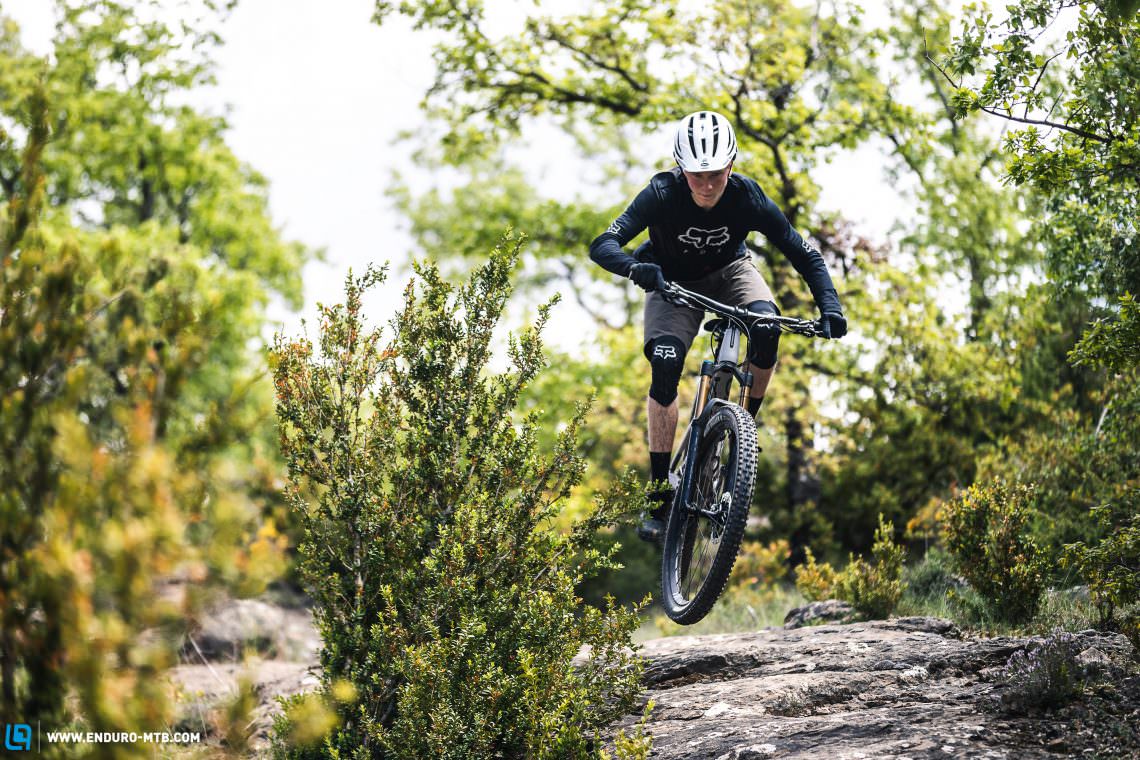
Climbing on the new Orbea Occam is a comfortable experience, thanks largely to its steep 77° seat angle. The bike accelerates well and does not suffer from any noticeable pedal bob. When putting the power down on steep climbs and up rocky steps, the Occam M10 feels like it wants to push forward, with anti-squat of the suspension meaning it extends under pedalling load. This trait gives the Occam a lively feeling on the trail and combined with its long chainstays, ensures that both wheels stay nicely weighted up even the steepest inclines. The new Shimano XT 12-speed drivetrain performed flawlessly and we were grateful for its wide range on the particularly steep mountain terrain. The only negative here were the long 175 mm cranks, which resulted in several pedal strikes and one really nasty crash. We would definitely recommend running shorter cranks.
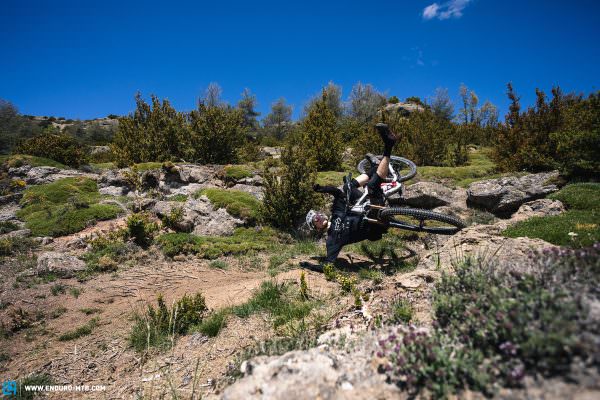

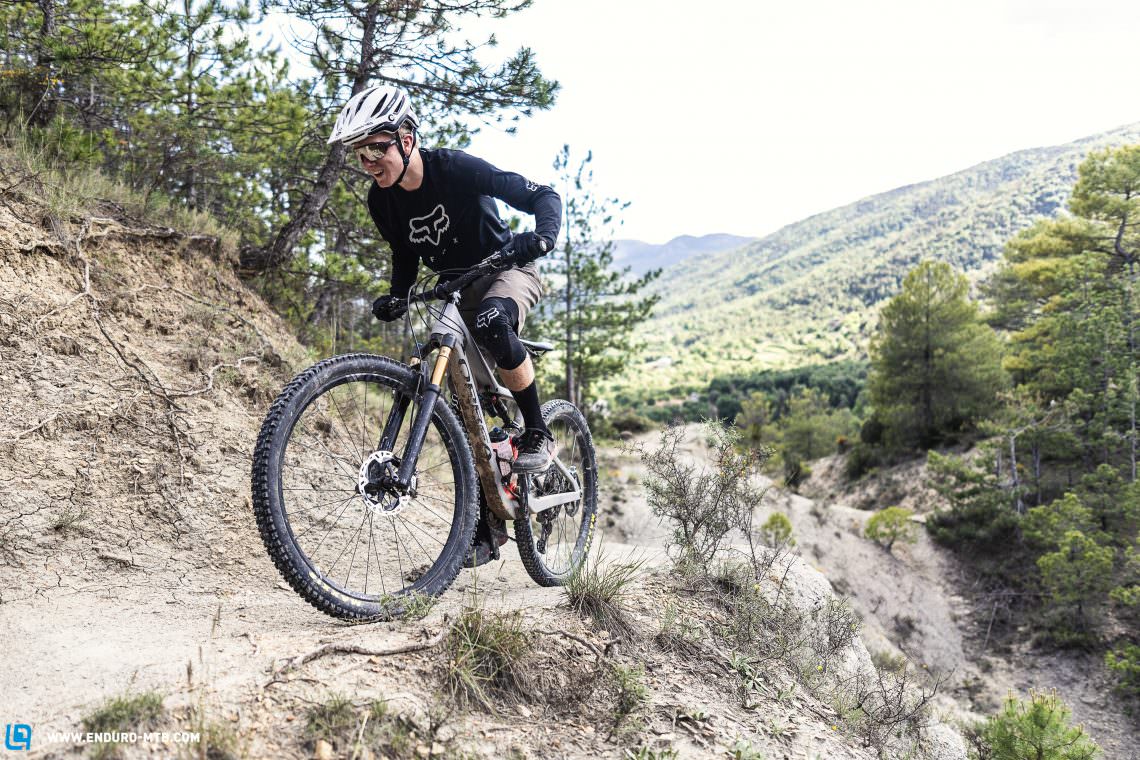
On the first day of riding, we kept our Occam set up the way the Orbea staff mechanics recommended, changing only the suspension pressures to suit our preferences. Initially, our tester struggled to feel confident riding the Occam on particularly demanding sections of trail. The handling of the Occam felt slightly off balance with the front wheel very prone to twitching when taking lines through rough rocks. In order to counteract this, we lowered the stem by 5 mm and rolled the bars forward to give us a stronger position over the front of the bike. We also increased the sag of the rear shock to 30 % and swapped out the smaller volume spacer for the 0.4 in3 option (included with every Occam) to help us feel more comfortable aboard the bike whilst ensuring we retained the necessary bottom-out resistance. These changes made the Occam feel a lot more controllable and stable on rough trails.
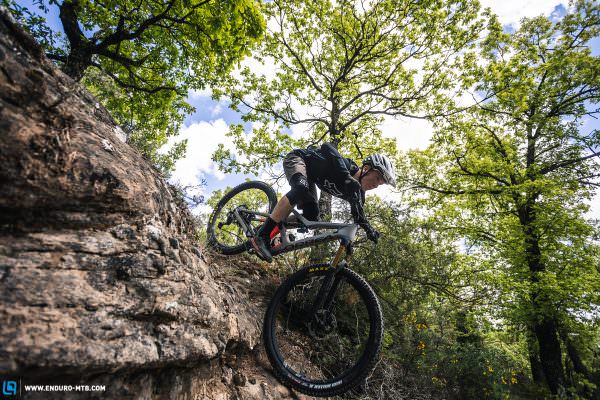
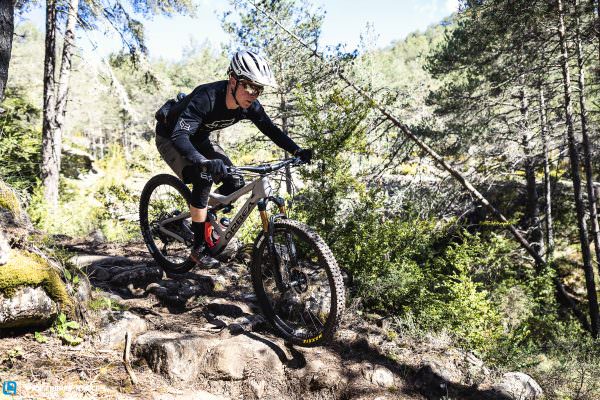
We would recommend running 30% sag and installing the included 0.4 in3 volume spacer to improve the Occam’s bottom-out resistance
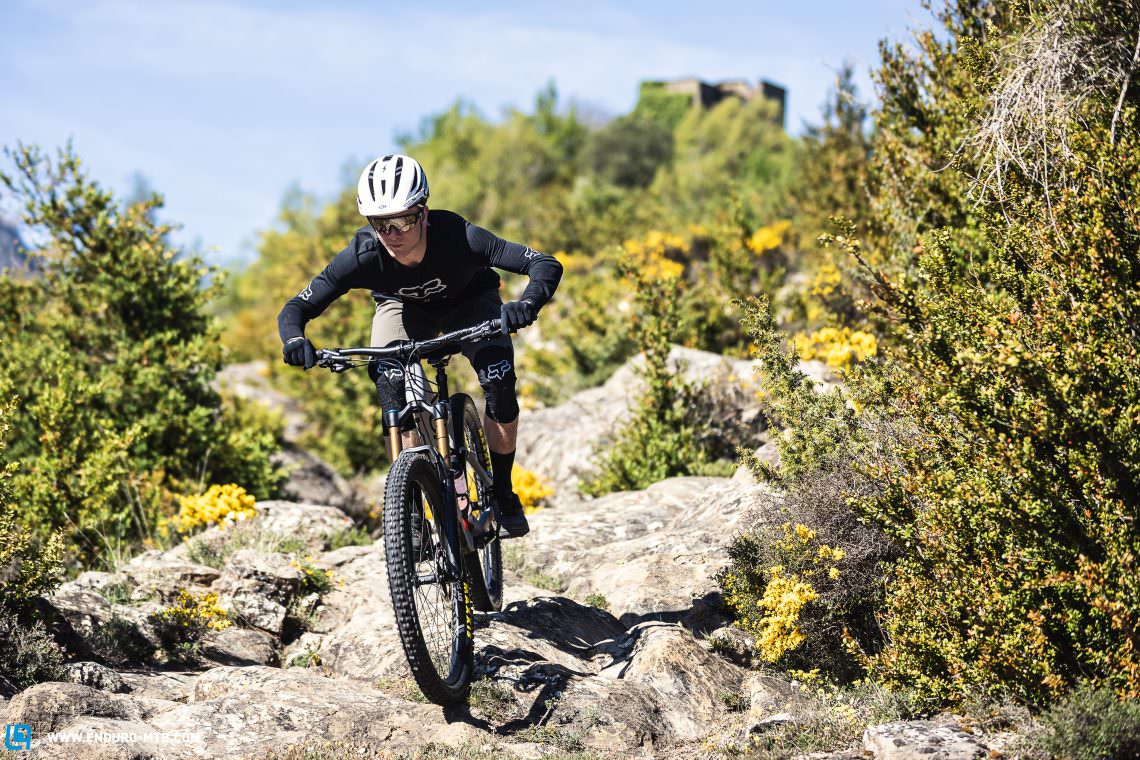
The new Occam’s suspension performs well across the board. Despite not being as supple off the top as a full-on enduro rig, it does have good levels of support and feedback and contributes nicely to the Occam’s lively attitude. The bike loves to pop up and over rocks and roots and feels nimble both in the air and on the ground. The 29-inch wheels carry speed well and compliment the Occam’s overall ride feel. Overall, the spec choices on the Orbea Occam M10 we rode convinced us with a solid performance over the two days of intensive riding. However, a larger front rotor would improve the Occam’s braking performance on longer descents.
Conclusion
The new Orbea Occam M10 is a fun and lively trail bike, capable of long days out as well as quick blasts on flowy singletrack descents. We can’t fault the build kit and the MyO custom colour configurator for the high-end models is a very nice touch. However, the bike did not feel as stable on the rough and rocky trails of the Pre-Pyrenees as we would have liked, so we would need to spend some time riding the Occam on our home trails in order to further test its capabilities on tracks we know well.
Read on for all models and specs.




